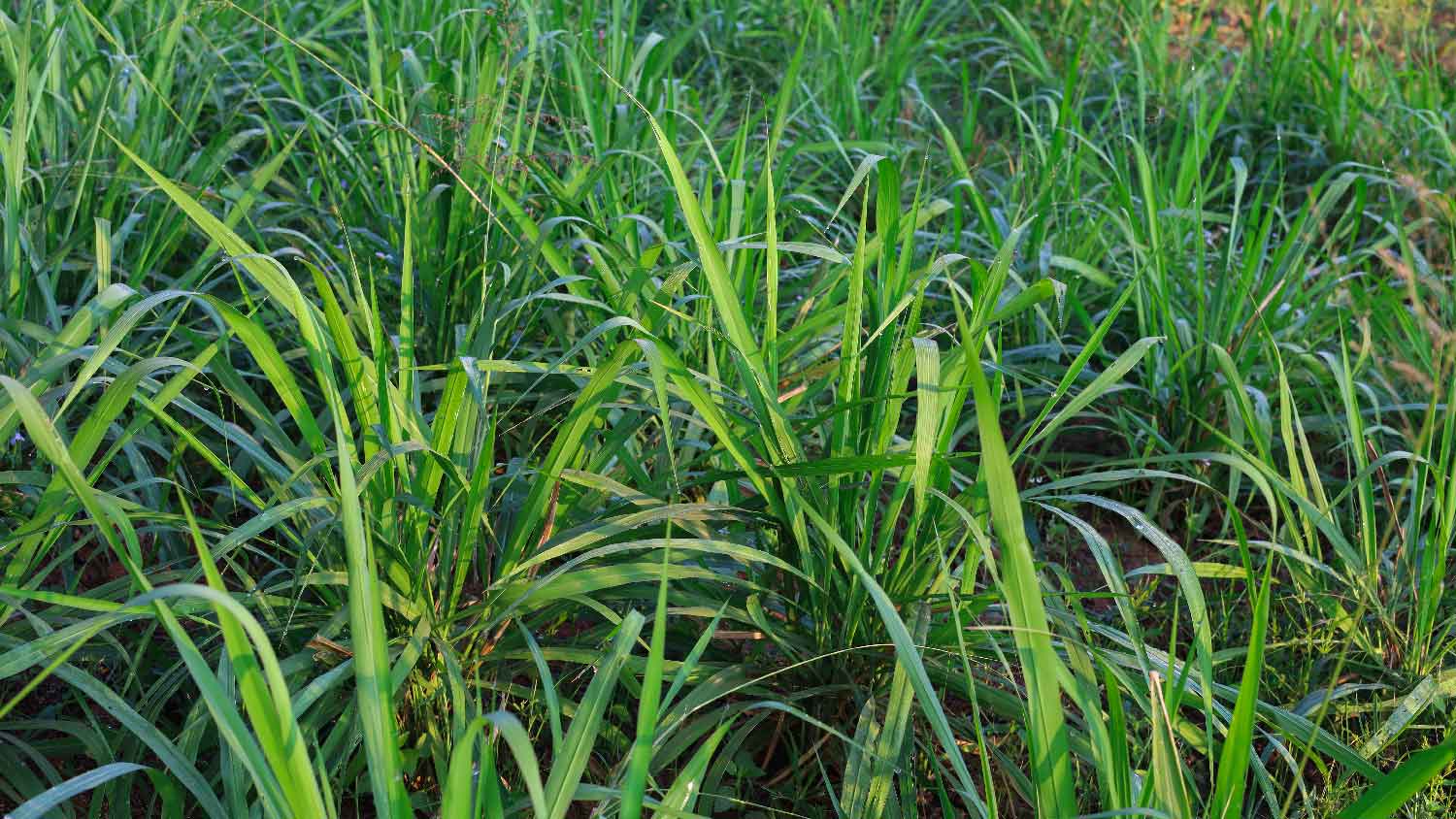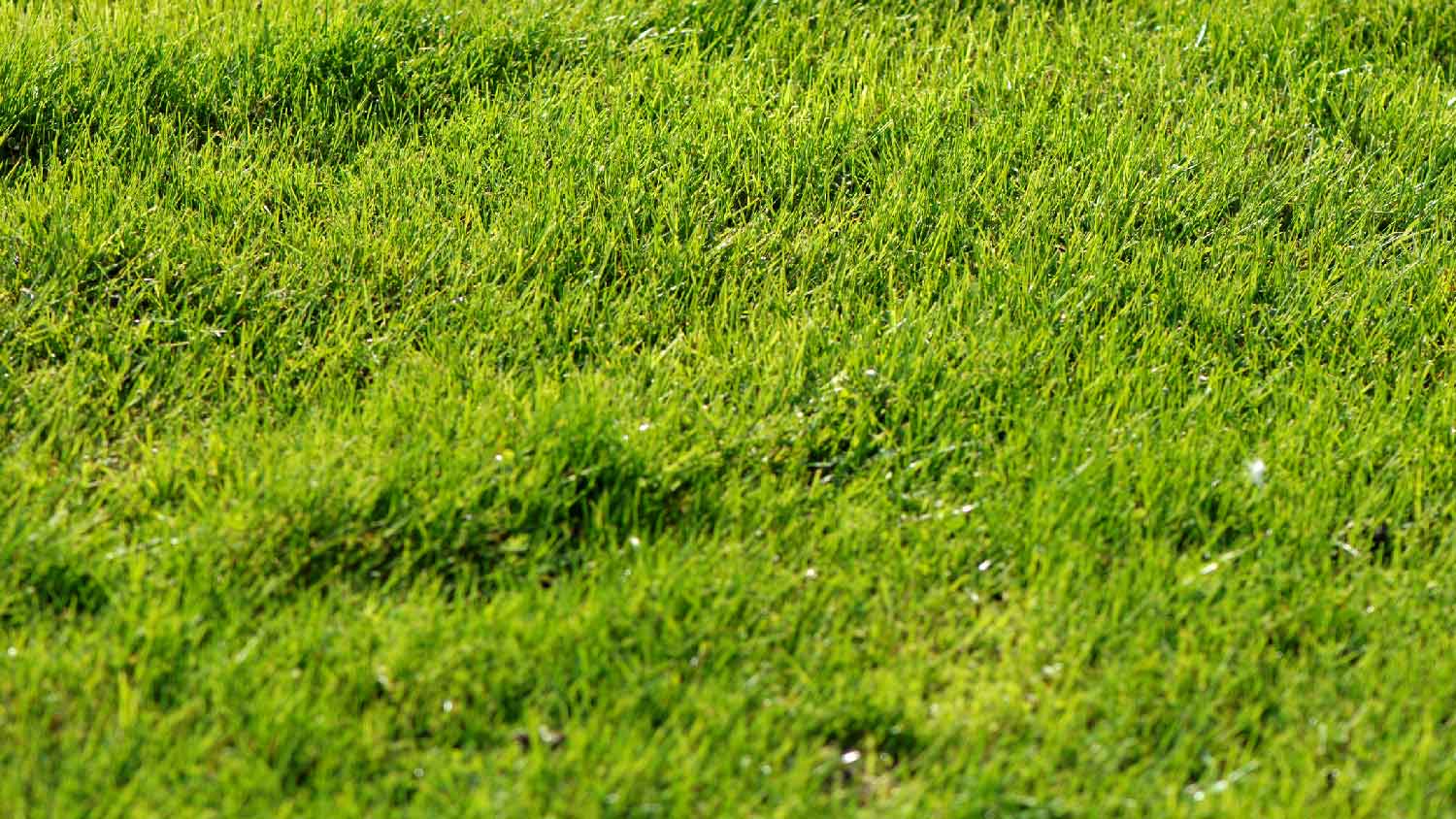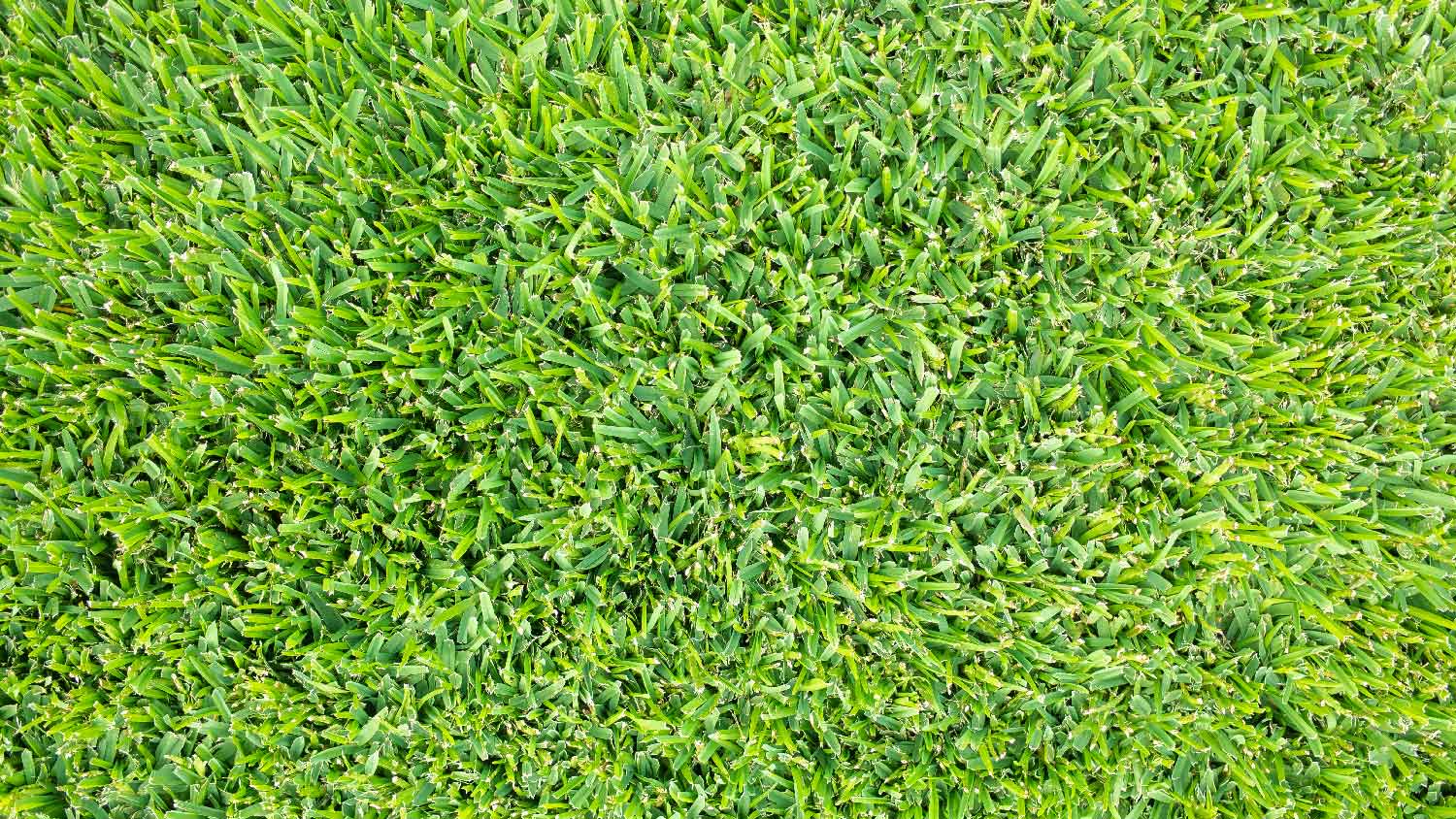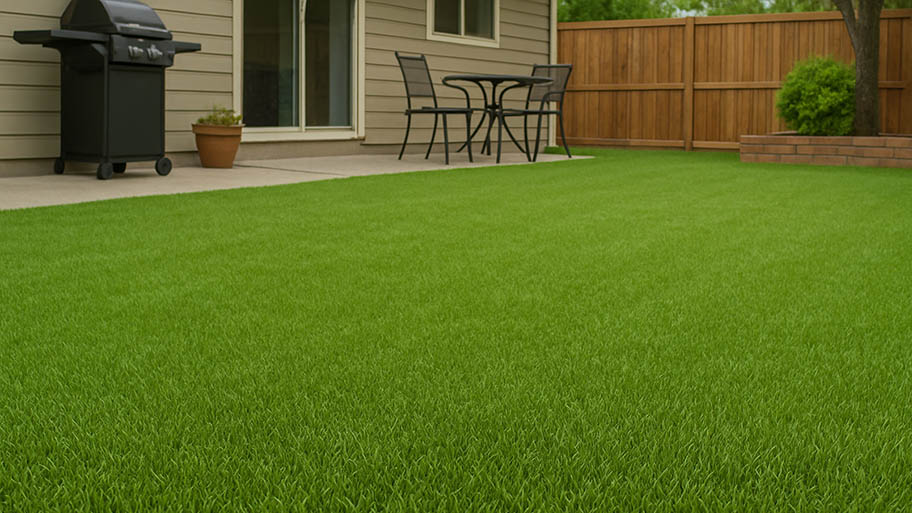
Removing an old lawn is often necessary to plant new grass or build a new outdoor structure. Find out what to budget for your lawn removal cost.
Learn how to tell the difference between these two turfs


Buffalo grass offers softness and drought resistance, while Bermuda grass boasts a vibrant, dense appearance and excellent foot traffic tolerance.
Buffalo grass stands out for its soft texture, minimal maintenance needs, and adaptability to poor soils, but it struggles with heavy foot traffic and weed susceptibility.
Bermuda grass demands more maintenance, has low cold tolerance, and can be invasive, requiring diligent lawn care to prevent overgrowth.
When it comes to selecting lush lawn turf that’s well-suited for warmer climates, a couple of popular choices are Buffalo grass and Bermuda grass. Buffalo grass impresses with its softness and blue-green tint, while Bermuda grass brings a vibrant dark green hue and dense carpet-like appearance. Both grasses have a distinct set of advantages and disadvantages and will thrive in different environments—consulting with a local lawn care specialist can help you find the best grass for your specific climate and soil conditions. Let’s take a look at the main differences between Buffalo grass versus Bermuda grass.

Buffalo grass and Bermuda grass are two warm-season grasses with distinct qualities. Buffalo grass is soft, adaptable, and slow-growing—ideal for poor soil. Bermuda grass is lush, dense, and fast-growing—ideal for highly-trafficked lawns. Each has its own benefits and drawbacks—the right one for you will depend on your climate and budget.

Originally a native grass that fed buffalos roaming the Great Plains, Buffalo grass is now a popular choice for warm-season turf grass. Consider these pros and cons when determining the right fit for your landscape.
| Pros | Cons |
|---|---|
| Soft texture | Slow growing |
| Relatively low-maintenance | Can’t withstand heavy foot traffic |
| Drought tolerant | Prone to weeds |
Best for:
Homes with limited foot traffic
Low-maintenance landscapes
Buffalo grass offers several advantages that make it an appealing choice for landscapes. The grass is well-known for its soft texture and fine, breezy appearance. Additionally, Buffalo grass demands minimal water and fertilizer once established. Plus, its slow-growing nature means it needs to be mowed less than other grass varieties.
Another benefit of Buffalo grass is its adaptability to poor soils, making it suitable for landscapes with less-than-ideal soil conditions. Its exceptional drought tolerance and resilience to cold weather also set it apart, ensuring vibrant greenery even in harsh climates. Unlike some warm-season grass varieties that are susceptible to winter damage, Buffalo grass enters dormancy during colder months to preserve resources, bouncing back to full vibrancy come spring.
Buffalo grass also has certain drawbacks, like its slow establishment period and susceptibility to pest or disease damage in high rainfall conditions. Additionally, Buffalo grass exhibits low shade tolerance, struggling to thrive in areas shaded by trees or structures. Competing weeds and grasses may overtake these shaded spots, hindering Buffalo grass growth. Moreover, Buffalo grass is not well-suited for heavy foot traffic, unlike some more resilient turf grass varieties.
Another notable disadvantage is its tendency to be weed-prone. Buffalo grass spreads via stolons, creating gaps between plants that can be susceptible to weed growth, especially during the warmer months. This can detract from its desired thick and lush appearance, requiring additional weed management efforts.

Bermuda grass is a warm-season grass with a lush, vibrant green color and dense growth pattern. While it can be invasive in certain situations, its durability makes it a great fit for high-traffic lawns. Here are the main pros and cons to consider.
| Pros | Cons |
|---|---|
| Self-spreads to fill in bare or brown patches | Low cold tolerance |
| Excellent foot traffic tolerance | Low shade tolerance |
| Adaptable to different soil conditions | Can spread invasively |
Best for:
Warm climates with little to no frost periods
High-traffic lawns
Sports fields and golf courses
Bermuda grass is quick to establish and has a high tolerance to sun, heat, and drought tolerance, making it well-suited for areas with direct sunlight and hot temperatures. It’s also exceptionally hardy against heavy foot traffic, making it an ideal fit for high-traffic landscapes.
Another key benefit of Bermuda grass is its rapid growth rate, allowing it to quickly fill in brown patches in your lawn and spread efficiently, contributing to a lush and healthy turf. Plus, with its dense, deep root system, it’s very resistant to droughts and able to adapt to a wide variety of soil conditions.
Despite the many benefits of a Bermuda grass lawn, there are a few drawbacks to consider. Bermuda grass requires more maintenance than some other warm-season grasses, especially when it comes to mowing and edging. It grows fast, so it will need to be mowed frequently. It also spreads very quickly, so constant edging is necessary to keep the lawn looking neat and manicured. Regular tasks like fertilizing and aerating your lawn are essential to keep Bermuda grass looking lush and healthy.
Along with that, Bermuda grass exhibits especially low cold tolerance, turning brown and entering dormancy earlier during colder periods. Moreover, it's not suitable for shaded lawns due to its preference for full sun and limited shade tolerance. Another challenge is its invasive spreading and deep rooting, making it challenging to remove once established. It commonly encroaches on garden beds and other areas if its growth isn’t controlled.

Considering Buffalo grass or Bermuda grass for your next DIY grass growing or professional landscaping project? Here’s how they compare head to head.
Both Buffalo grass and Bermuda grass can make healthy, vibrant lawns. Buffalo grass has fine, soft, bluish-green blades that many consider beautiful, but they can also fall in different directions and look slightly unkempt to those who prefer a more manicured look. Bermuda grass grows in a stiff, dense carpet and tends to look more manicured when cared for properly.
Both Bermuda grass and Buffalo grass may not stay green for as long as other types of grass. Bermuda grass can turn brown and go into dormancy early in the winter season. Buffalo grass, on the other hand, stays green later in the colder season but turns green later in the spring. The key difference is their ability to maintain color during droughts—Buffalo grass keeps its color, while Bermuda grass is quick to turn brown.
Buffalo grass is known for its soft, fine texture and pleasant under-foot feel. Bermuda grass is denser and coarser, so it isn’t as soft to the touch.
Bermuda grass is one of the best grasses for high-traffic lawns. While it may not immediately bounce back after a session of heavy traffic, its ability to self-spread and grow quickly means it will fill in any sparse patches in no time. Buffalo grass is not well-suited for areas with high foot traffic.
Since Buffalo grass and Bermuda grass are both warm-season grasses, they do best in warmer climates with mild winters. However, Bermuda grass is notably sensitive and quick to turn brown in the cold, whereas Buffalo grass stands up relatively well to colder weather.
Bermuda grass is exceptionally tolerant of intense heat and thrives in hot, sunny climates. Buffalo grass, while also heat-tolerant, requires additional watering to maintain its color and density in extreme heat.
If you’re looking at Buffalo grass or Bermuda grass to cover a shady lawn, neither will be your best option. Both of these grasses need full sun to thrive, although Buffalo grass does have some shade tolerance. For lawns receiving partial shade, opt for more shade-tolerant grasses like St. Augustine, Centipede, or Zoysia grass.
Both Buffalo grass and Bermuda grass have good drought tolerance once established, with extensive root systems that enable them to draw water from deep within the soil. Both can withstand long periods of water scarcity, but Buffalo grass requires less water to maintain its green color during drought periods.
Once established, Bermuda grass grows fast, quickly recovering from foot traffic and spreading throughout the landscape. Bermuda grass has a reputation for speedy, aggressive growth that can even be considered invasive. In contrast, Buffalo grass is relatively slow to establish and grow.
Thanks to its dense, carpet-like growth and quick spreading, Bermuda grass often chokes out weeds before they have a chance to establish. Buffalo grass isn’t nearly as dense, providing more space for weeds to pop up. However, if you don’t overwater a Buffalo grass lawn, weeds have a difficult time growing.
When comparing Buffalo grass to Bermuda grass, they both have about the same level of susceptibility to insects and disease. Both are especially vulnerable to mildew, mold, and fungal diseases, so proper soil drainage is essential.
They performed much needed, landscaping and lawn, cleanup, and tree trimming. Everything looks great.
We are pleased and very happy with this lawn service. They did a wonderful job!! They were helpful, competent, and a pleasure to work with. We would recommend their service to anyone needing a lawn care service.
Quick quality work!! So happy with our lawn
I found jason from a neighbor and he is wonderful! He does an amazing job with everything! We have animals and he is super friendly with them as well. We originally hired him for normal yard care but now he is doing everything. Lawn care, garden care, weeds, rose bushes, tree maitinence,...
Very professional I couldnâ t have asked for a better quality deck. Amazing customer service very knowledgeable and provided updates throughout. Amazing company and amazing people.
They have done a great job on my lawn and I would recommend them to anyone that needs a lawn care service
Enoch came to do our scheduled maintenance and was quick, efficient, and respectful while in our yard. He let me know what they had done and was observant and took care of what we had wanted. We always have a goof experience with Bulwark!
Momentum moving is by far THE BEST movers I have ever used! They are professional, showed up on time, and there was not a single dent or ding in either my furniture or walls. They actually put up blankets to protect the door frames when moving which I have never seen done before in all the...
Kurt really knows his stuff about lawns! We had a good talk about what he was going to do, exactly which chemicals he was going to use, what I should do after he leaves, and he was fully open and honest about his prices. I trust him with my lawn care. I would highly recommend Kurt for lawn...
Norm was fantastic to work with! His design was beautiful and he was easy to work with. He helped us come up with ways to reduce the cost and still get what we wanted. I would recommend him to anyone looking for a reliable, honest and hardworking landscaper.
From average costs to expert advice, get all the answers you need to get your job done.

Removing an old lawn is often necessary to plant new grass or build a new outdoor structure. Find out what to budget for your lawn removal cost.

Artificial grass is a low-maintenance alternative to traditional turf. Learn how much artificial grass installation costs and what affects your price.

The cost to reseed a lawn can vary depending on the size of your yard and the condition of the soil. We’ll help you figure out the true cost of reseeding or overseeding your lawn, along with whether or not you should hire a professional.

Learn how to get rid of quack grass and keep it from returning once you discover how to identify it in your lawn. Read on to learn more.

Want to know how to get rid of Johnsongrass in your lawn? Here’s how to control this noxious weed, from identifying this invasive grass to using chemicals against it.

Learn how to prepare soil for grass seed to give your new lawn the best chance of becoming healthy, happy, robust, and the envy of your neighbors.